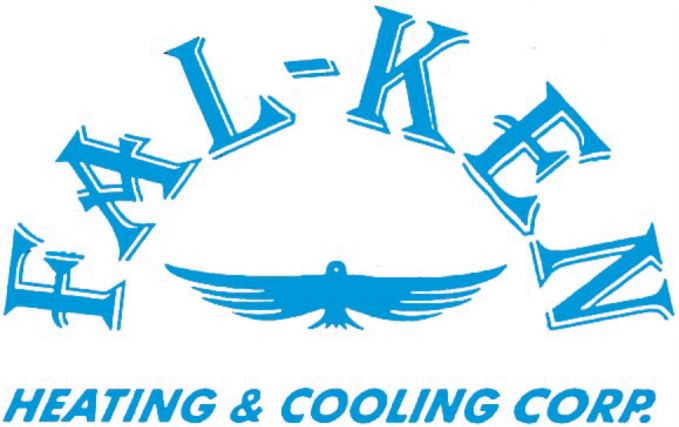
When searching for a heating and cooling system for your home, it’s crucial to choose one that balances efficiency, functionality and the impact on your wallet. That’s why many homeowners look to mini-splits for comfort in their home.
Mini-splits—often called ductless mini-splits—provide many advantages that make them an attractive choice for both homes and businesses. They're extremely energy efficient, lowering energy consumption and saving on utility bills, because they eliminate the energy losses associated with the ductwork found in traditional HVAC systems. They also allow users to tailor the temperature in each room, improving overall comfort while not wasting energy.
If you’re thinking about mini-split installation in Holbrook, it’s important to first find out if these devices are recommended for your living situation. Here, we’ll examine how mini-splits compare to other heating and cooling devices and appliances.
What a Mini-Split Is and How It Works
A mini-split, or ductless mini-split, is a heating and cooling system that has no ductwork. It's a good option in homes that don't have existing air ducts and for homes with rooms that aren’t served well by the residence's existing HVAC system.
A mini-split system consists of two primary components: an outdoor compressor/condenser and an indoor air-handling device. They are linked by a conduit containing the power cable, refrigerant tubing, suction tubing and a condensate drain.
Here's how it works: the outdoor compressor distributes the refrigerant necessary for heat exchange through the coils and the air handler. The indoor unit pulls in air from the room, cools or heats it over the coils and forces the conditioned air back into the room.
Mini-Split vs. Central Air
Mini-splits offer targeted cooling in certain rooms or zones of your home. They are outstanding for energy efficiency because they only heat or cool the areas you desire. However, they sometimes don't blend seamlessly into every location because of their wall-mounted indoor units.
Conversely, a central air system uniformly conditions your entire home, keeping consistent comfort levels throughout. Its ductwork is tucked away in a mechanical room or closet, preserving the aesthetics of your home. But it may not be as energy efficient as a mini-split, especially in bigger homes or residences where certain areas may not need nonstop conditioning.
Mini-Split vs. Window AC/Window Unit
Mini-splits are typically more energy efficient and quieter than a window air conditioning unit and are useful for cooling air in multiple rooms. This is why mini-splits are a convenient option for many homeowners. They also use a kind of refrigerant that is more earth-safe, decreasing their environmental impact. These units can even add value to your home due to their durable nature and exceptional cooling capabilities. However, they come with a higher up-front cost.
On the contrary, window air conditioners are less expensive initially. They are often a good fit for homes that cannot accommodate a central AC system or for homeowners with budget constraints. Despite these advantages, window units can utilize up to 40% more energy than ductless mini-split systems and often are louder.
Mini-Split vs. Portable AC
The answer to what is better, a ductless mini-split or a portable air conditioning unit, depends on your main concerns. If your main worries are energy efficiency and cooling capability, a mini-split is heads and shoulders better than a portable AC unit. However, if funding is a major concern, a portable AC is less expensive.
Mini-Split vs. Gas Furnace
Choosing between a mini-split system and a gas furnace depends on an assortment of factors including the climate in your city, home size, energy efficiency preferences and spending plan.
A mini-split system most of the time is more energy efficient than a gas furnace. It can heat and cool distinct areas inside of your home, providing custom climate control in specific rooms. Mini-splits also are generally quieter and have a larger up-front cost, but their operating costs are usually smaller due to their better energy efficiency.
Alternatively, a gas furnace can be an extremely effective heating source, particularly in colder climates where mini-split heat pumps may not be able to maintain comfort levels in the bitter cold. While they are less energy efficient than mini-splits, gas furnaces likely cost less. However, their operating costs can be higher, especially if natural gas prices jump up.
Mini-Split vs. Heat Pump
Mini-splits and heat pumps use the concept of heat transfer. They are both energy efficient, but a heat pump's air ducts can use more power. However, the choice between a mini-split and a heat pump often depends on a family's needs and circumstances.
For example, if you live in a warmer climate and mainly need cooling, a mini-split system might be a good choice. But then again, if you want both heating and cooling and already have ductwork in your home, a heat pump could be a more efficient option.
Mini-Split vs. Space Heater
With regards to heating and cooling a household, mini-splits and space heaters each have strengths and weaknesses. However, for total efficiency, versatility, comfort and safety, mini-splits outperform space heaters. Mini-splits have superior energy efficiency due to the fact they deliver conditioned air right to different zones and can serve several rooms at once.
Space heaters are much less expensive to buy but are typically used only for heating a confined area or an individual room. They also are usually less energy efficient. In contrast to mini-splits, space heaters do not provide cooling. The greatest drawback for space heaters is the risk of fire. Industry experts say some 1,700 fires per year involve space heaters.
